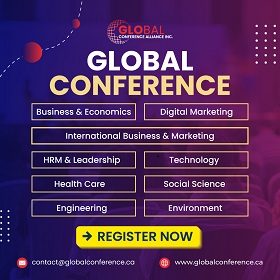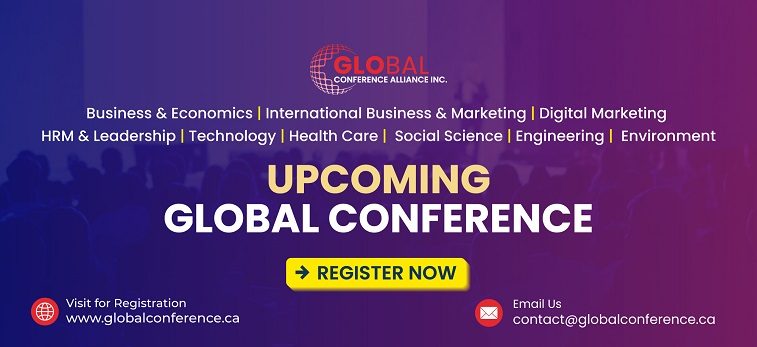A scientific poster is more than just a display of facts; it’s a visual tool that helps explain your research clearly and quickly. If you’re preparing for an event or presentation, you might be thinking about layout, visuals, and wording. That’s when you may start wondering how to make a successful scientific poster?
Make a successful scientific poster by using clear text, strong visuals, and a clean layout. Focus on one key message, use readable fonts, and keep the design simple. Add charts, use short sections, and practice your talk to explain it well.
Are you curious about how to design, write, or organize each part? If yes, keep reading—this article shares all the steps and tips you need to create a well-structured and clear scientific poster from start to finish.
How to Make a Successful Scientific Poster?
Not every poster gets noticed, but a smart one surely will. A good poster doesn’t just show facts—it helps others understand them quickly. It’s all about using clear text, strong visuals, and simple layouts. Let’s go over how to make your poster stand out at any event.

Clear Core Message
Every good poster starts with one main message. Think about the one idea you want people to remember after they look at your work. Instead of cramming in everything, choose only what supports that main idea. Break long blocks of text into smaller sections. If you’ve ever walked around events like upcoming conferences in Canada or the USA, you’ll notice the best posters are the ones that get straight to the point without extra stuff.
Easy Layout Plan
Try to arrange your content into two or three columns from top to bottom. Readers should be able to follow the flow without feeling confused. Keep each section in the right place and give it enough space. Don’t place text and images too close together or too far apart. Make sure your name and title are right at the top. This structure makes the poster clean, simple, and easy to understand.
Right Font Sizes
It’s important to use fonts that can be read from a few feet away. The title should be the biggest text, and the body should be smaller but still clear. Keep the number of fonts low; using one or two is best. Choose simple fonts without extra decorations. Use different sizes for headings and details so readers know where to look. A good font setup makes your poster feel neat and smart.
Clean Design Style
Too many colors or messy sections can make a poster hard to read. Choose two or three colors that work well together and stick with them. Make sure the text and background have a strong contrast for easy reading. Add white space to help the eyes rest while reading. Don’t try to fill every corner. A clean design gives your poster a nice look and helps others enjoy it more.
Strong Visuals
Pictures, charts, and graphs should be big enough to see clearly. They should show your data without needing too much explanation. Use simple labels and short titles below each visual. Keep your design style the same for all visuals to avoid confusion. Don’t use too many charts in one spot. A few large, clear images are better than many small ones that are hard to read.
Short and Direct Text
No one likes reading long paragraphs on a poster. Use short blocks of text, bullet points, and simple words. Stay between 300 and 800 words total across the whole poster. Give every section a clear and short heading to guide the reader. Use titles like “Main Result” or “What We Found.” This makes it easier for others to quickly get what your research is about.
Right Poster Size
Before printing, check what size your event allows for posters. Most posters are 48 inches by 36 inches when printed sideways. For digital versions, follow the platform size rule, like 1920×1080 pixels. Don’t guess the size or change it at the last minute. Sizes that are not wrong can cut off text or stretch your images. Planning the correct size makes everything look better and more professional.
Final Touches
For more information, add a QR code to your poster. This could link to your paper, email, or contact form. Save the file as a high-quality PDF at 300 dpi so it prints clearly. Double-check that all text and images look sharp and not blurry. These final steps may seem small, but they really help. A polished poster shows you put effort into your work.
Practice Your Talk
If someone asks about your poster, be ready to explain it. Practice a short 2–3 minute talk that covers each part. Learn how to go from one section to another smoothly. Focus on your images and key points while you speak. This makes you sound more confident. Being prepared shows that you understand your topic and care about sharing it with others.
Ask for Feedback
Before printing the full-size version, ask someone to check your design. A friend, teacher, or classmate can help find mistakes or unclear parts. You can also print a smaller version to see how it looks. Fixing problems early saves time and makes the final poster better. Good feedback helps turn an okay poster into a great one.
Making a good poster takes time, but it is worth the effort. A clean layout and simple words help people read it easily. Strong visuals and a short talk will make you stand out more. If you plan well, your poster will be remembered.
What Are the Best Tools or Software for Designing Scientific Posters?
Designing a scientific poster doesn’t have to be hard, especially if you choose the right tools. Different software makes the design process easier in different ways. Some are very simple to use, while others offer more features. Keep reading to find the right one for you.
PowerPoint
PowerPoint is one of the easiest tools for creating posters. Many people already know how to use it for slides, and the same skills work for posters too. It has drag-and-drop options, simple text tools, and built-in shapes. You can also pick custom sizes for posters. It’s great if you’re new to design or want to finish quickly without learning something new.
Google Slides
Google Slides is perfect if you want to work online and don’t have PowerPoint. It’s free and easy to use with just a Google account. You can share your work with others and even get help in real time. It has fewer design features than PowerPoint, but it still lets you add images, text, and charts easily. It’s a smart pick for teamwork.
Canva
Canva is an online design tool with lots of ready-made templates. You don’t need any design skills to use it. You just pick a template and add your own content. It has a simple drag-and-drop style and many free icons, shapes, and fonts. If you want your poster to look colorful and creative without spending too much time, Canva is a good choice.
Adobe Illustrator
Adobe Illustrator is a professional design tool that gives you full control over every detail. It’s not as easy to learn as the others, but the results can look very sharp and polished. You can create custom shapes, arrange things perfectly, and make high-quality designs. If you’re ready to try something advanced, this is a strong tool to explore.
LaTeX
LaTeX is different from the others because it uses code to build your poster. It’s mostly used for posters with a lot of math or research data. You don’t use a mouse much—you write commands instead. It takes more time to learn, but the results are clean and clear. If you’re okay learning something new, it can be worth it.
Each of these tools has its own style and benefits, so there’s no one right choice. What matters most is how comfortable you feel using it and what kind of poster you want to create. Some tools are simple and quick, while others offer more control. Pick the one that works best for you and start creating with confidence.
How to Make Your Scientific Poster Visually Engaging Without Overcrowding?
Making a scientific poster is not just about putting information on paper—it’s about making it look clean and easy to follow. A crowded poster can confuse people, even if the content is good. That’s why design plays a big role in how your message comes across. If you want your poster to stand out, keep reading to learn how to get that perfect balance.
- Keep It Simple: A neat and basic layout helps people understand your poster faster without feeling lost or overwhelmed by too many things.
- Use White Space Wisely: Space between sections makes your poster feel less packed and helps each part of your research stand out more clearly.
- Limit the Text: Writing short and to the point keeps your poster readable. Long paragraphs can make viewers lose interest quickly.
- Pick the Right Images: Use visuals that explain or support your topic. Don’t add pictures just to fill space—they should have a reason.
- Balance Text and Images: Mix images and words evenly across your poster. This makes your layout easier on the eyes and more engaging.
- Choose High Contrast Colors: Use colors that are easy to see and read. For example, dark text on a light background works better than pale colors.
- Group Related Items Together: Keeping similar content in the same area helps people move through your poster in a smooth and logical way.
Designing a clear poster isn’t hard if you keep things simple and organized. Good use of space and visuals can really make a difference. Always think about what will help people understand your work quickly. A smart layout makes your message more powerful.
Tips to Organize Sections Logically on Your Scientific Poster
Your work will be easier to understand if your poster is well-organized. When everything flows in a clear order, people can follow your ideas without feeling lost. Each section should lead naturally to the next without jumping around. Let’s explore how to do that the right way.
Title and Authors
The first thing people see should be the title, and it needs to be clear and bold. Right below the title, add your name and anyone else who helped. This section tells viewers what your project is about and who worked on it. Make sure the title gives a quick idea of your topic without being too long. A well-placed title draws attention and sets the tone for the rest of your poster.
Introduction Section
Every poster needs a strong start, and that’s where the introduction comes in. This part gives the background, shares why the topic matters, and what problem you’re trying to solve. Keep your words short and easy to understand. You don’t need to explain everything just enough to help people care. It’s like setting the stage before you tell the full story. A good intro can make people want to keep reading.
Methods in Order
This part explains what you did to find answers. Think of it as the steps you followed to test an idea or solve a problem. Use simple words and avoid going into too many tiny details. For technical fields like engineering, the flow of information matters just as much as the content itself. For example, if you’re making a poster for an engineering conference, it’s helpful to prioritize clear problem statements, design processes, and visual prototypes in a logical sequence.
Results That Shine
You show here what happened during your project. Use charts, tables, or pictures to explain your results. Try to keep this part clean so it’s easy to understand at a quick glance. Don’t fill it with long text—just the key points. Think about what you want the viewer to notice first. Simple design with clear data makes a strong impact without confusing your audience.
Conclusion and Impact
The last section should wrap everything up in a few short sentences. Tell people what you found and why it matters. This is not the place to add new info—it’s where you remind people of the main point. End with a short sentence that leaves a good impression. If your project helped solve a real problem or opened up a new idea, say it clearly. Leave the reader with a strong final thought.
Laying out your poster in the right order helps people enjoy and understand your work more quickly. When your ideas are arranged clearly, it saves time and leaves a good impression. Try not to skip important parts or mix things up. A clean structure always works best.
What Fonts and Sizes Work Best for Scientific Posters?
Choosing the right fonts and sizes is one of the easiest ways to make your poster look clean and easy to read. If the text is too small or hard to see, people might walk away. Even great content won’t matter if no one can read it clearly. Let’s look at how to keep everything clear and readable.
- Title Size: Use big, bold letters about 85 to 100 pt so people can see the title from far away.
- Author Details: Keep your name and affiliation between 50 to 60 pt so they stay easy to read, but don’t overpower the title.
- Section Headings: Pick a size around 40 to 50 pt so each section stands out clearly and helps guide the reader through your poster.
- Body Text: Use a size between 24 to 36 pt so it can be read from 1–2 meters away without any trouble.
- Captions and Notes: Choose a smaller font, around 18 to 30 pt, for picture captions or reference details at the bottom of your poster.
- Font Style: Stick to simple fonts like Arial, Helvetica, or Calibri—these are clean, easy to read, and work well for scientific posters.
- Consistency Matters: Use the same font style throughout the whole poster so it looks neat and doesn’t distract the viewer.
Making your poster easy to read helps people stay interested and understand your work better. When your fonts are clear and the sizes are right, everything feels more organized. Try not to mix too many styles or shrink the text too much. A simple, neat layout always makes a stronger impression.
Should You Use Charts, Graphs, or Tables in a Scientific Poster?
Charts, graphs, and tables help explain data in a clear and simple way. Use a chart when you want to show patterns or trends over time. Graphs work well to compare numbers quickly. A table is helpful when you need to share exact numbers. Choose the format that makes your data easiest to understand.
Keep all visuals clean and easy to read. Avoid using too many colors or packed designs. Space out the elements and keep labels short but clear. Add titles that explain what each visual shows. If a chart or table feels confusing, it’s better to try a simpler version or a different type.
Use the same font and style for all labels across the poster. Place each chart or table near the part of the text it supports. Always double-check that the numbers match your written explanation. When done right, visuals can help people understand your points faster and remember them better.
What Mistakes to Avoid When Designing a Scientific Poster?
Creating a great scientific poster isn’t just about having good content. A poster that’s hard to read or poorly designed can easily be ignored. Design mistakes can take away attention from your research completely. Curious about what you should avoid? Let’s look at the biggest mistakes and how you can steer clear of them.
Text Overload
Some people add big paragraphs, thinking more words will explain better. But too much text can push people away. A poster should give highlights, not your full paper. Use short sentences and bullet points where possible. Stick to the main idea and avoid filling every space. When there’s too much to read, most people just walk past. Keep it brief, clean, and focused on what truly matters.
Bad Font Choices
Fonts might seem like a small detail, but they can change how readable your poster is. If your text is too small or in a fancy style, people won’t bother reading. Stick with simple, clear fonts like Arial or Calibri. Make sure the size is large enough to be seen from a few feet away. Your goal is to make it easy, not make people squint or guess letters.
Messy Layout
A poster with no order or clear flow can confuse viewers. Without proper sections, it’s hard to know where to begin or what to read next. Think of your layout like a story from title to conclusion. Use boxes, headings, or lines to separate each part. Many researchers spend weeks preparing their paper, but rush through the poster design. But at big events, understanding the significance of posters at conferences makes it worth planning the layout carefully.
Poor Color Contrast
Colors can make a poster look great, but only if used the right way. If the text and background are too close in color, reading becomes hard. Always test your colors and make sure they stand out. Light backgrounds with dark text are a safe pick. Don’t use too many bright or clashing colors; they distract more than they help. Keep it balanced so everything is easy on the eyes.
Random Images
Pictures and graphs are helpful, but not when they feel randomly added. Every visual must support your message. Low-quality images or confusing charts take attention away. Use clear, well-labeled visuals that are easy to understand. Also, don’t crowd your poster with too many images—it can look messy. Choose visuals that actually add value and help explain your points better, not ones that just fill space.
By skipping these common design mistakes, you give people a reason to stop, read, and remember. Let your poster talk smart and look sharp at the same time. Simple changes can really boost the impact.
How to Prepare a Digital Version of Your Scientific Poster?
Creating a poster for online use needs a little extra planning. You want it to look good on any screen, big or small. Digital posters need clear text, a clean layout, and a proper file format. Follow the steps below to make sure your poster works well online.
Choose Correct Dimensions
Before doing anything else, always check the size you need first. Some events ask for a widescreen size like 1920 by 1080 pixels. Others might need different formats, like square or tall ones. Using the wrong size can stretch or shrink your content. That can make text hard to read and images look messy. Sticking to the right size makes sure your poster stays sharp and clear.
Keep Text Readable
Many people will view your poster on phones or laptops. So your words must be easy to read without zooming in. Use simple fonts and keep the size large enough. Avoid using more than two fonts to keep things clean. Choose text colors that stand out from the background. If your text is too small or too fancy, people might skip reading it.
Add Helpful Visuals
A poster with pictures or charts is more fun to look at. Just don’t add too many at once or place them too close together. Keep the design neat so it’s not confusing. Each picture or chart should match the part it explains. If people understand your visuals quickly, they’ll remember your poster better. Good visuals help you explain more with fewer words.
Save Properly
Save your poster the right way after you’ve finished it. A PDF file is usually best because it keeps your layout safe. If an image file is needed, use PNG or JPG. Make sure the file size is not too big or too small. A clear and well-sized file works best on all screens. You don’t want people waiting for it to load.
Check Before Sharing
After saving, view your poster on different devices if you can. Try phones, tablets, or laptops to see how it looks everywhere. Check that the text is clear and the images are not blurry. Make sure any links or QR codes work. Fix anything that doesn’t look right before sharing it. A final check can stop small mistakes from being seen by many.
Digital posters are great when made with care and planning. Always use the right size and clear fonts for best results. Helpful visuals make your message easier to understand quickly. Before you send or upload, test everything to make sure it works.
Commonly Asked Questions
When you’re done designing your scientific poster, questions often come up, especially about the little things that still matter a lot. From printing tips to layout checks, small choices can make a big difference. Some details are easy to miss if you haven’t made a poster before. These FAQs cover helpful answers that can save time and improve your final work.
What File Format Should I Use to Print a Poster?
PDF is the safest and most popular file format for printing posters. It keeps your design in place, so nothing moves or changes. When saving your PDF, make sure the resolution is high—300 dpi works best for printing. This will help the text and images look clean and sharp on a big board.
How Much Text Is Too Much for a Poster?
If your poster feels like reading a book, it has too much text. Try to keep your total word count between 300 and 800 words. Break the text into short blocks or bullet points. This makes it easier for people to quickly read and understand your work.
Can I Add a QR Code to My Poster?
Yes, adding a QR code is a great idea. It lets people scan and visit a website, watch a video, or download your paper. Just make sure the code is large enough to scan easily. Place it at the bottom or corner of the poster to keep the design clean.
Should I Print a Small Version Before the Final One?
Printing a small version can help you catch mistakes before printing the full-size one. It also shows you if the layout looks balanced and easy to read. You can use regular paper to test it out. A quick check like this saves time, money, and avoids last-minute stress.
Is It Okay to Use Humor in My Poster?
A little humor is fine if it fits your topic and is respectful. It can make your poster more fun and memorable. But don’t overdo it or distract from your main point. Keep your tone friendly and professional at the same time.
How Do I Know If My Poster Looks Crowded?
If your poster feels busy or hard to scan quickly, it may be too crowded. Too much text, tiny images, or no space between sections can make it overwhelming. Try to leave white space so the eyes can rest. A simple, clean look works better than packing in too much.
What Type of Paper Should I Print My Poster On?
Most posters are printed on glossy or matte paper. Glossy paper makes colors pop, while matte paper reduces glare. If you’re showing your poster under strong lights, matte is often better. Always check with the event organizers for their preferences as well.
Can I Reuse a Poster for Another Event?
Yes, you can reuse your poster if the topic still fits the new event. But always check the size rules and theme of the new event. You might need to update small details like the date or your contact info. A quick refresh can help make your poster look new again.
What Happens If My Poster Is Too Big?
If your poster is too large for the board, part of it may hang off or get folded. This can make it hard to read and look messy. Always follow the size limit set by the event. If you’re not sure, ask the organizer before printing.
Should I Include My Contact Information?
Yes, it’s a smart move to add your email or a small QR code with your contact details. That way, if someone wants to ask questions later, they can reach you easily. Place it at the bottom corner to keep it neat. Just be sure to double-check it for mistakes before printing.
Bottom Line
Designing a poster takes more than just placing facts on a page. You need a clear message, neat layout, and visuals that support your research. Use simple fonts, the right colors, and short text blocks to keep everything clear. Keep sections in order and avoid crowding too much information. If you follow these basic rules, you’ll easily understand how to make a successful scientific poster that looks great and delivers your message clearly.
Before you print or share, review everything and ask for feedback. Don’t forget to keep your font sizes readable and visuals sharp. Add a QR code if needed, and always test the final version on different devices. Stay confident, be proud of your work, and good luck with your poster—it deserves attention and respect.








